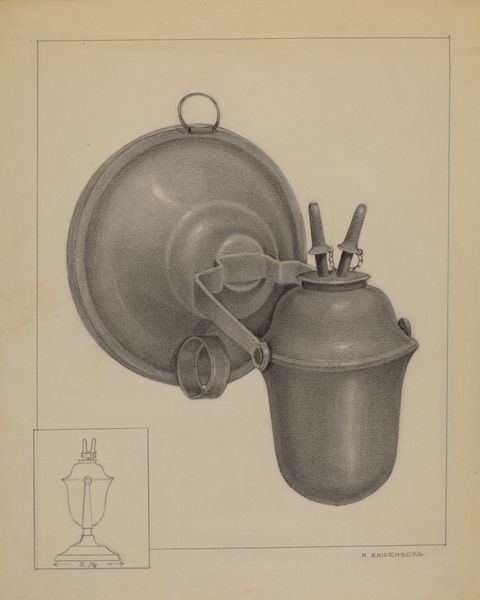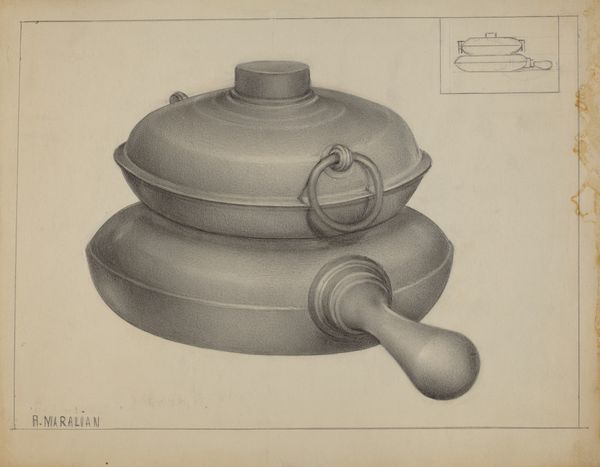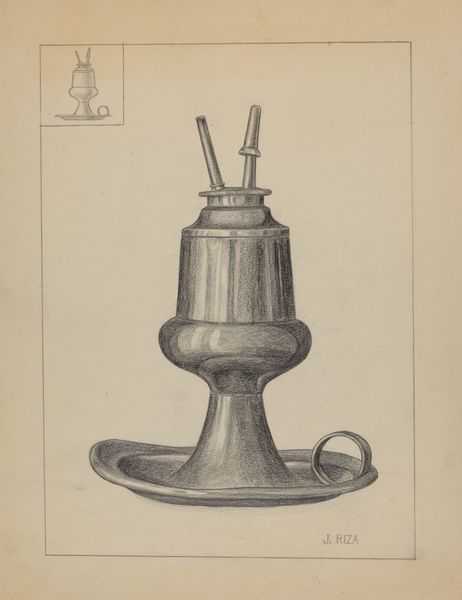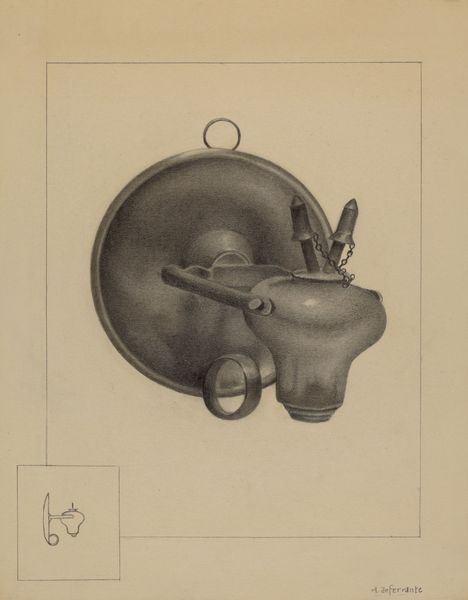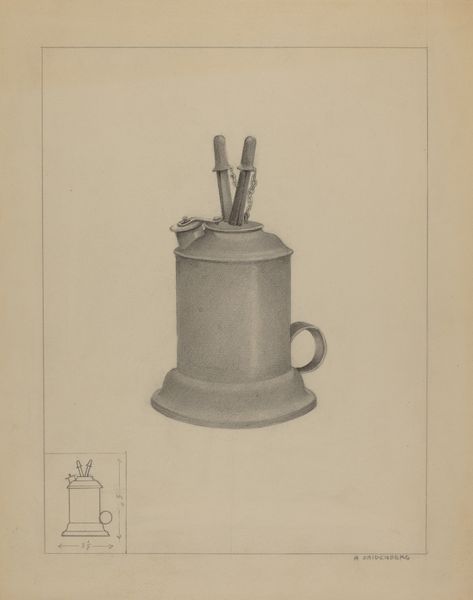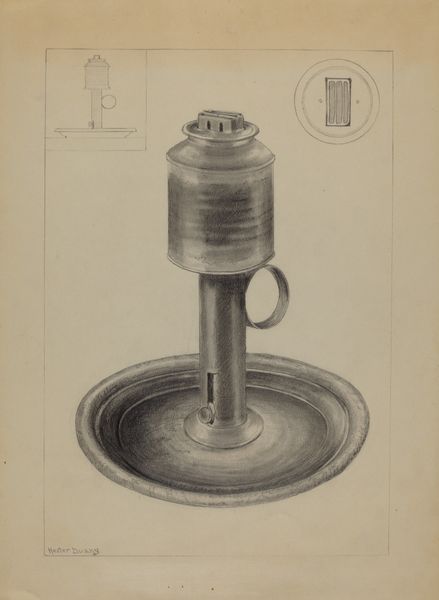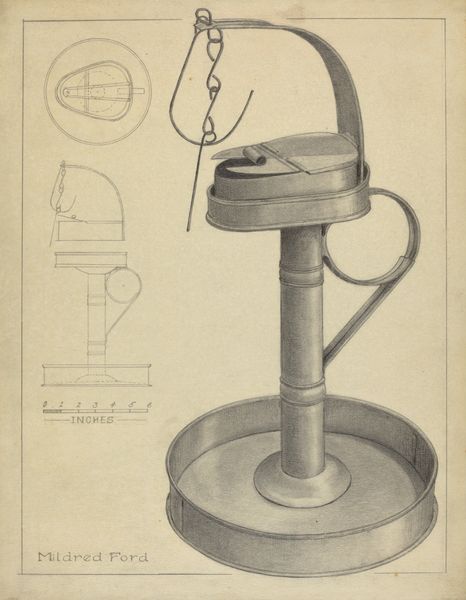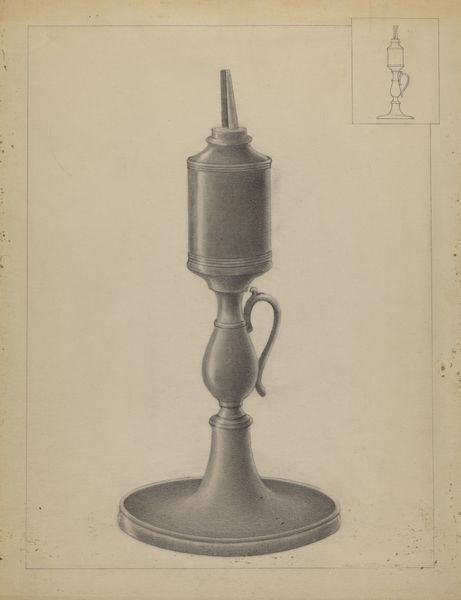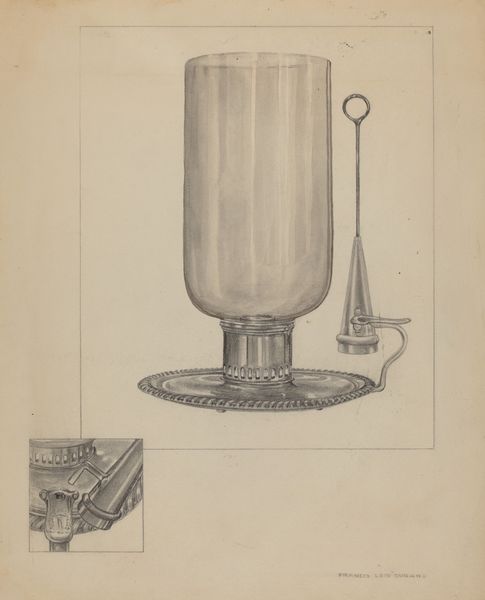
drawing, pencil
#
drawing
#
pencil
#
realism
Dimensions: overall: 29.6 x 22 cm (11 5/8 x 8 11/16 in.)
Copyright: National Gallery of Art: CC0 1.0
Curator: This drawing, entitled "Lamp," was created around 1936 by Arsen Maralian, using pencil on paper. What catches your eye? Editor: The texture. The varying pencil strokes give it such depth, even with a muted palette. I immediately think of domesticity, functionality. It’s a lamp, after all, a tool of illumination. But I’m also curious about its specific context, considering the time it was made. Curator: Good question! This lamp likely served a purpose beyond simple illumination. In the mid-1930s, as electrification spread unevenly across rural America, designs for lamps became linked to broader discussions about modernization and living standards, particularly within the Armenian diaspora that Maralian belonged to. Lamps like these could have symbolized access to progress, but also highlighted existing disparities. Editor: So, this image exists at a compelling intersection of aspiration and reality? It uses form to ask: Who gets light and why? I'm wondering about Maralian’s compositional choices too. The technical drawing in the lower left implies functionality but disrupts a purely aesthetic reading. Is he referencing utilitarian design principles? Curator: Yes, and perhaps highlighting the artist’s process of documenting an object intended for mass production. His work acknowledges how function serves ideology, doesn’t it? The artist carefully renders each curve and plane; notice how the light falls so evenly on the object itself. There’s an intense focus on structure and form here. Editor: Indeed! Maralian's technical skills are apparent; you almost forget this is a preliminary sketch rather than the final product. The geometric interplay is fascinating—the large disc juxtaposed with the cylindrical body of the lamp and smaller ring really stabilizes the composition, while all being meticulously executed. Curator: Considering it in this light shifts my initial impression, which focused on domesticity, and introduces a discourse about accessibility to social advancement during that period. Editor: Absolutely. Close attention to the material properties alongside an examination of related societal and political considerations only serves to elevate our appreciation of the piece.
Comments
No comments
Be the first to comment and join the conversation on the ultimate creative platform.
